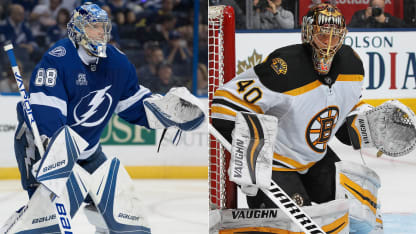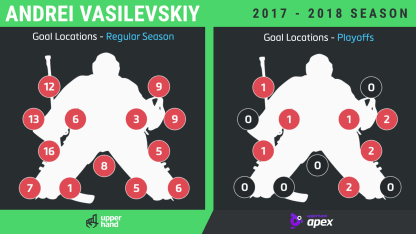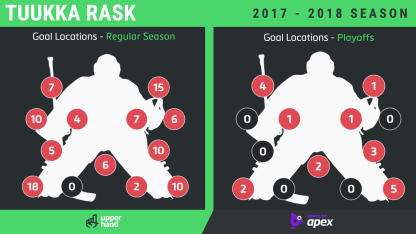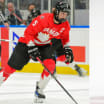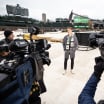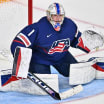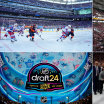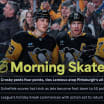Low and wide: Last season, Rask gave up 26 percent of his goals along the ice outside either skate. This season it was 28 percent, with the biggest number going in low to his right. He allowed seven goals along the ice outside his skates against Toronto, including three odd-man rushes and two breakaway moves that stretched him out onto his belly. But the way Rask plays these rushes, often starting outside his posts laterally before the initial pass, also makes it harder for him to recover side-to-side space on those plays. As a result, quick shots and one-timers, which accounted for 44 percent of his goals this season, can catch him moving.
Make him move: Lateral attacks increase the odds of beating any goalie and were a big factor in scoring on Rask this season. Fifty of his 100 tracked goals in the regular season came after a pass or play across the slot line, an imaginary line that splits the offensive zone from the goal line to the top of the face-off circles. Twenty-one of those 50 were allowed after Feb. 15. That's above the 33.9 percent average and it continued in the first round, with nine of 19 goals allowed after plays across the slot line, and another two with same-side lateral movement. Several came on odd-man rushes and cross-ice passes getting through that can lead to the goaltender cheating for a pass. Rask was off angle, hedging for a pass with his back skate, when Patrick Marleau beat him cleanly on a 2-on-1 in Game 3.
Far side: Getting caught flat, or parallel, to the goal line, on rush chances, like the Marleau goal, has been part of Rask's straight-line retreats against the rush in the past. He's done a better job of staying square to these attacks, but that tendency to get flat in his movements contributed to several far-side goals from clean shots, when he had time to set and see the release, as well as quick shots after lateral plays in the zone.
Post play: Rask continued to modernize his post-integration this season, and his sharp-angle goals dropped from 21 last season to 12 this season. But he was beaten three times by Toronto using reverse-VH, including two over the short-side shoulder, a space that can be targeted when he drops into this position with the puck near the bottom of the face-off circle.
